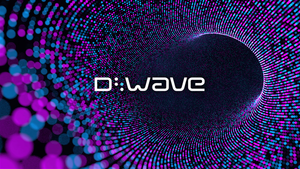
Sunnyvale, CA – Advanced Micro Devices (NASDAQ: AMD) has delivered a stunning third-quarter 2025 financial report, significantly exceeding analyst expectations and signaling a formidable shift in the high-performance computing and artificial intelligence markets. On November 4, 2025, the semiconductor giant announced a record revenue of $9.2 billion, a remarkable 36% year-over-year increase, comfortably surpassing the consensus estimate of approximately $8.76 billion. This impressive financial feat was underscored by a non-GAAP diluted earnings per share (EPS) of $1.20, outperforming projections of $1.17.
AMD's exceptional performance is a testament to its strategic investments and rapid execution across key growth segments, particularly in data center and client computing. The company's aggressive push into the burgeoning AI accelerator market with its Instinct series, coupled with the sustained strength of its EPYC server processors and the burgeoning success of its Ryzen client CPUs, has positioned AMD as a critical player in the ongoing technological revolution. This quarter's results not only reflect robust demand for AMD's cutting-edge silicon but also highlight the company's growing influence on the future trajectory of AI infrastructure and personal computing.
Powering the AI Future: Instinct MI350 and EPYC Drive Data Center Dominance
At the heart of AMD's Q3 triumph lies the exceptional performance of its Data Center segment, which saw a staggering 22% year-over-year revenue increase, reaching an impressive $4.3 billion. This growth was predominantly fueled by the accelerated adoption of the 5th Gen AMD EPYC processors ("Turin") and the groundbreaking AMD Instinct MI350 Series GPUs. The Instinct MI350X and MI355X, built on the advanced CDNA 4 architecture, have emerged as pivotal accelerators for AI workloads, delivering up to 4x generation-on-generation AI compute improvement and an astounding 35x leap in inferencing performance compared to their MI300 predecessors. With 288GB of HBM3E memory and 8TB/s bandwidth, these GPUs are directly challenging established market leaders in the high-stakes AI training and inference arena.
The EPYC "Turin" processors, based on the Zen 5 architecture, continued to solidify AMD's position in the server CPU market, reportedly offering up to 40% better performance than equivalent Intel (NASDAQ: INTC) Xeon systems in dual-processor configurations. This superior performance is critical for demanding cloud and enterprise workloads, leading to over 100 new AMD-powered cloud instances launched in Q2 2025 by major providers like Google (NASDAQ: GOOGL) and Oracle (NYSE: ORCL). AMD's integrated approach, providing EPYC CPUs paired with Instinct MI350 GPUs for AI orchestration, has proven highly effective. This comprehensive strategy, alongside the introduction of the EPYC Embedded 9005 Series, distinguishes AMD by offering a full-stack solution that optimizes performance and efficiency, contrasting with competitors who may offer more siloed CPU or GPU solutions. Initial reactions from the AI research community and hyperscale customers have been overwhelmingly positive, citing the MI350's performance-per-watt and the openness of AMD's software ecosystem as key differentiators.
Beyond the data center, AMD's Client and Gaming segment also contributed significantly, with revenue soaring by 73% to $4 billion. This was largely driven by record sales of Ryzen processors, particularly the new Ryzen AI 300 series ("Krackan Point") and Ryzen AI MAX 300 ("Strix Halo") APUs. These processors feature integrated Neural Processing Units (NPUs) capable of up to 50 AI TOPS, positioning AMD at the forefront of the emerging "AI PC" market. The introduction of new Ryzen 9000 series desktop processors and the latest RDNA 4 graphics cards, offering improved performance per watt and integrated AI accelerators, further bolstered the company's comprehensive product portfolio.
Reshaping the Competitive Landscape: Implications for Tech Giants and Startups
AMD's robust Q3 2025 performance carries profound implications for the entire technology ecosystem, from established tech giants to agile AI startups. Companies heavily invested in cloud infrastructure and AI development, such as Meta (NASDAQ: META), Microsoft (NASDAQ: MSFT), and Google, stand to benefit immensely from AMD's increasingly competitive and open hardware solutions. AMD's commitment to an "open AI ecosystem," emphasizing industry standards, open interfaces like UALink for accelerators, and its robust open-source ROCm 7.0 software platform, provides a compelling alternative to more proprietary ecosystems. This strategy helps customers avoid vendor lock-in, fosters innovation, and attracts a broader community of developers and partners, ultimately accelerating AI adoption across various industries.
The competitive landscape is undoubtedly intensifying. While Nvidia (NASDAQ: NVDA) continues to hold a dominant position in the AI data center market, AMD's Instinct MI350 series is directly challenging this stronghold. AMD claims its MI355 can match or exceed Nvidia's B200 in critical training and inference workloads, often at a lower cost and complexity, aiming to capture a significant share of the AI accelerator market by 2028. This head-to-head competition is expected to drive further innovation and potentially lead to more competitive pricing, benefiting end-users. Meanwhile, AMD continues to make significant inroads into Intel's traditional x86 server CPU market, with its server CPU market share surging to 36.5% in 2025. Intel's client CPU market share has also reportedly seen a decline as AMD's Ryzen processors gain traction, forcing Intel into aggressive restructuring and renewed focus on its manufacturing and AI alliances to regain competitiveness. AMD's diversified portfolio across CPUs, GPUs, and custom APUs provides a strategic advantage, offering resilience against market fluctuations in any single segment.
A Broader AI Perspective: Trends, Impacts, and Future Trajectories
AMD's Q3 2025 success is more than just a financial victory; it's a significant indicator of broader trends within the AI landscape. The surge in demand for high-performance computing, particularly for AI training and inference, underscores the exponential growth of AI-driven workloads across all sectors. AMD's focus on energy efficiency, with its Instinct MI350 Series GPUs surpassing a five-year goal by achieving a 38x improvement in AI and HPC training node energy efficiency, aligns perfectly with the industry's increasing emphasis on sustainable and cost-effective AI infrastructure. This focus on Total Cost of Ownership (TCO) is a critical factor for hyperscalers and enterprises building out massive AI data centers.
The rise of the "AI PC," spearheaded by AMD's Ryzen AI processors with integrated NPUs, signals a fundamental shift in personal computing. This development will enable on-device AI capabilities, enhancing privacy, reducing latency, and offloading cloud resources for everyday tasks like real-time language translation, advanced image processing, and intelligent assistants. This trend is expected to democratize access to AI functionalities, moving beyond specialized data centers to everyday devices. Potential concerns, however, include the intense competition for talent and resources in the semiconductor industry, as well as the ongoing challenges in global supply chains that could impact future production and delivery. Nevertheless, AMD's current trajectory marks a pivotal moment, reminiscent of previous semiconductor milestones where innovation led to significant market share shifts and accelerated technological progress.
The Road Ahead: Innovation, Integration, and Continued Disruption
Looking ahead, AMD is poised for continued innovation and strategic expansion. The company has already previewed its next-generation rack-scale AI system, codenamed "Helios," which will integrate future MI400 GPUs (expected 2026), EPYC "Venice" CPUs (also expected 2026), and Pensando "Vulcano" NICs. This integrated, system-level approach aims to further enhance performance and scalability for the most demanding AI and HPC workloads. We can expect to see continued advancements in their Ryzen and Radeon product lines, with a strong emphasis on AI integration and energy efficiency to meet the evolving demands of the AI PC and gaming markets.
Experts predict that AMD's open ecosystem strategy, coupled with its aggressive product roadmap, will continue to put pressure on competitors and foster a more diverse and competitive AI hardware market. The challenges that need to be addressed include scaling production to meet surging demand, maintaining its technological lead amidst fierce competition, and continuously expanding its software ecosystem (ROCm) to rival the maturity of proprietary platforms. Potential applications and use cases on the horizon span from more sophisticated generative AI models running locally on devices to vast, exascale AI supercomputers powered by AMD's integrated solutions, enabling breakthroughs in scientific research, drug discovery, and climate modeling. The company's landmark agreement with OpenAI, involving a multi-gigawatt GPU deployment, suggests a long-term strategic vision that could solidify AMD's position as a foundational provider for the future of AI.
A New Era for AMD: Solidifying its Place in AI History
AMD's Q3 2025 performance is more than just a strong quarter; it represents a significant milestone in the company's history and a clear signal of its growing influence in the AI era. The key takeaways are AMD's exceptional execution in the data center with its EPYC CPUs and Instinct MI350 GPUs, its strategic advantage through an open ecosystem, and its successful penetration of the AI PC market with Ryzen AI processors. This development assesses AMD's significance not just as a challenger but as a co-architect of the future of artificial intelligence, providing high-performance, energy-efficient, and open solutions that are critical for advancing AI capabilities globally.
The long-term impact of this performance will likely be a more diversified and competitive semiconductor industry, fostering greater innovation and offering customers more choice. AMD's ascent could accelerate the development of AI across all sectors by providing accessible and powerful hardware solutions. In the coming weeks and months, industry watchers will be keenly observing AMD's continued ramp-up of its MI350 series, further announcements regarding its "Helios" rack-scale system, and the adoption rates of its Ryzen AI PCs. The ongoing competitive dynamics with Nvidia and Intel will also be a critical area to watch, as each company vies for dominance in the rapidly expanding AI market. AMD has firmly cemented its position as a leading force, and its journey in shaping the AI future is just beginning.
This content is intended for informational purposes only and represents analysis of current AI developments.
TokenRing AI delivers enterprise-grade solutions for multi-agent AI workflow orchestration, AI-powered development tools, and seamless remote collaboration platforms.
For more information, visit https://www.tokenring.ai/.





